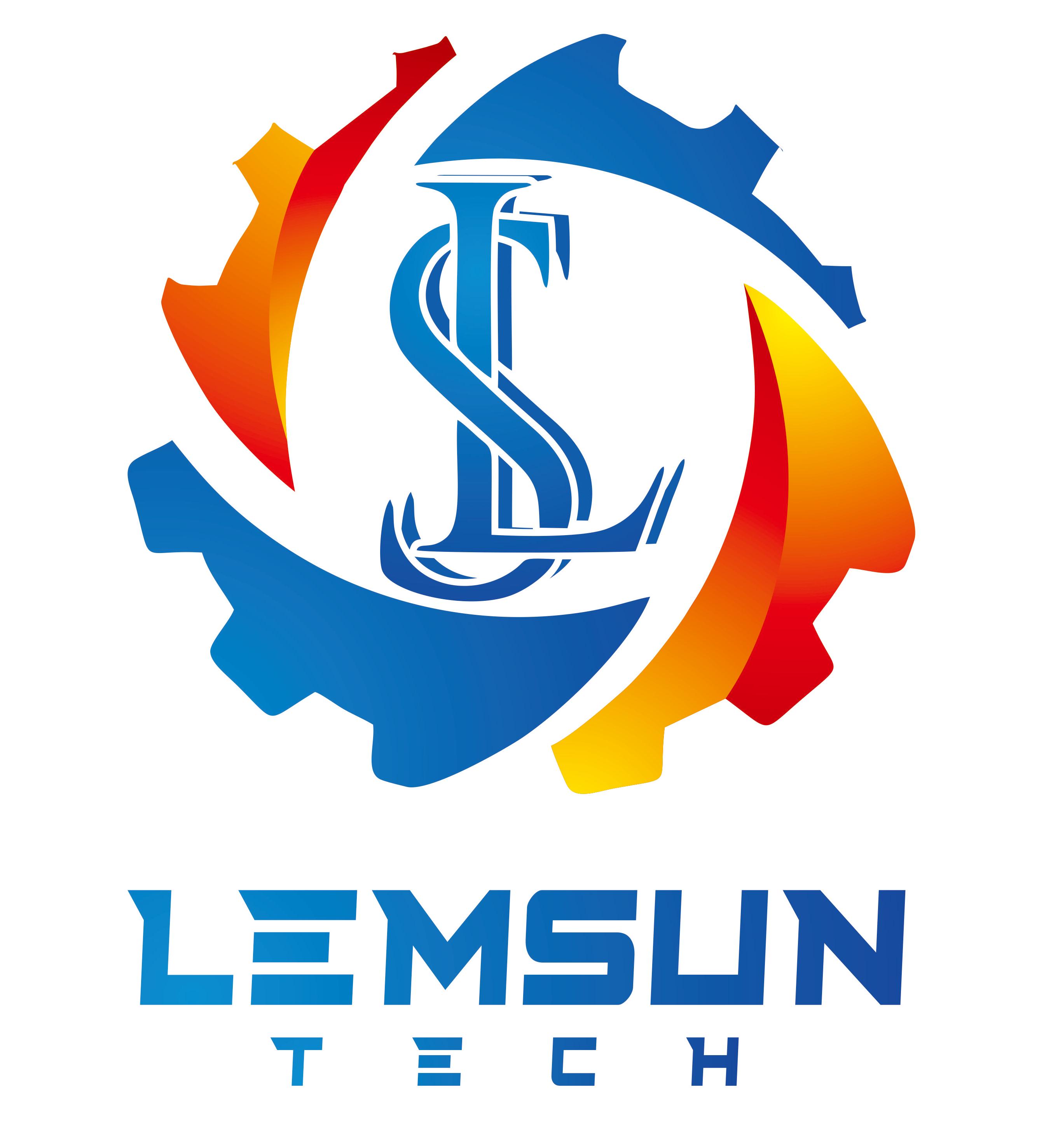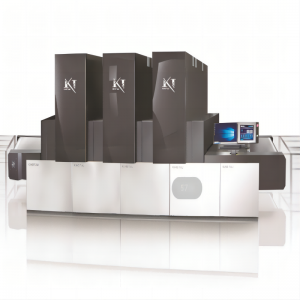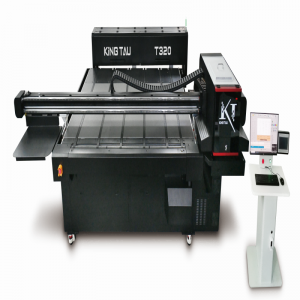As the country with the largest production of ceramic tiles and the most production lines in the world, China has become the country with the most inkjet printers installed and used. The demand for inkjet printers in China’s ceramic tile industry is about 3000 units, and from the current perspective, the market cake is still huge. At present, the technology of inkjet printers in China has matured in stages. However, due to the small product differentiation, price competition has become the main competitive point, and the market has entered a period of low profit. The brand pattern of inkjet printers has been phased in.
Faced with such a market landscape, multiple inkjet machine companies have expressed that providing personalized and timely services is the decisive point, and new technological innovation and breakthroughs must focus on diversification and compatibility.
Domestic inkjet printers have become the mainstream in the market
2013 was an exceptionally rapid year for the development of ceramic inkjet printing in China. According to incomplete statistics, there are currently over 2000 inkjet printers operating online in China, and domestic inkjet printers account for about 90% of the domestic market share.
According to Peng Jichang, the general manager of Foshan Xinjingtai Ceramic Machinery Equipment Co., Ltd., Sail nozzles account for about 80% of the market share. Its three major partners, such as Hope, Xinjingtai, and Meijia, account for about 80% of the domestic market share, while Taiwei, Caishen, Jingtao, Gongzheng, and Keyue account for about 20% of the domestic market share; The imported inkjet printers are mainly occupied by Kuaidaping, KeraJet, B&T, Tiangong Ferrari, Durst, and others.
At present, the brand pattern of inkjet printers in China has been phased in, and the competition among existing brands is intensifying. It is very difficult for new brands to enter this field. Firstly, the technology of inkjet printers has matured in stages, with less product differentiation, and price competition has become the main competitive point, leading to the current era of low profit prices and a significant increase in business risks; Secondly, the market capacity is limited. According to expert analysis, the market capacity of inkjet printers in China’s ceramic tile industry is about 3000 units. Based on the continued hot sales of 800 units in 2014, the average sales per brand are about 70 units, with a higher proportion in the top few and perhaps only 30-50 units in the bottom. The production and sales of inkjet printers have no economies of scale.
Since the introduction of the first imported inkjet printing machine in the ceramic industry in 2009, in just two to three years, domestic inkjet printers have been able to compete with imported inkjet technology equipment that once occupied a large market share.
Upon investigation, Lu Runxi, Chairman of Foshan Meijia Ceramic Equipment Co., Ltd., believes that the first reason is the maturity of domestic inkjet technology, which is not inferior in quality and performance to imported inkjet machines. Taking the Carnival series digital inkjet printer as an example, both in terms of mechanical structure hardware and self-developed software, there is quality assurance. The 16GB software memory can support printing 254 bricks with different patterns at once, greatly improving the speed of product development for ceramic enterprises.
Close and timely service becomes the winning point
With the increase in the number of inkjet machines produced online, the competition between domestic and foreign inkjet equipment enterprises is fierce, and the cost of maintaining business and services is bound to increase. In this situation, the era of price competition for inkjet equipment enterprises will gradually become bleak. In response to the actual needs of manufacturers, service competition will become one of the key factors for enterprises to seize the market high ground.
As is well known, the intimate service of imported inkjet machines cannot compete with domestic inkjet machines. If experts are sent from abroad to solve the problem, the process will be cumbersome, including video conferences, visas, etc. It is worth noting that experts sent from abroad may not necessarily be in line with each other, and there may be several different batches of experts who can determine and solve problems. And ceramic companies may also face temporary production stoppages as a result.
It is reported that we hope to have set up multiple service outlets in important ceramic production areas across the country, equipped with a professional service team of over 100 people. Meijia also has more than 100 equipment maintenance engineers and after-sales service technicians in 14 production areas across the country, providing 24-hour personalized and professional after-sales service for ceramic enterprises.
It is reported that both Hope and Meijia’s professional after-sales service teams can rely on powerful networking functions to remotely monitor and diagnose machine problems, eliminate faults, and rush to the site to help solve problems as soon as possible.
Inkjet equipment companies not only provide high-quality equipment, but also assist in upgrading inkjet hardware and software, organizing training courses, and providing free training services to all companies that purchase inkjet machines, including theoretical learning and practical operation. Among them, including Hope, Meijia, and Caishen.
Chen Jun, Sales Director of the Ceramic Machinery Business Unit of Shenzhen Runtianzhi Digital Equipment Co., Ltd. (hereinafter referred to as “Caishen”), introduced that currently, the most urgent problem that ceramic enterprises need to solve is the problems such as wire drawing and ink dripping that occur during the use of inkjet machines.
It is reported that wire drawing and ink dripping are common problems that affect quality and continuous production in inkjet production, mainly caused by nozzle blockage. Because the spray holes and ink dots are very fine, small impurities, dust, and water vapor are enough to block the spray holes or block the ink dots sprayed out, so blockage is a common problem in inkjet machines.
At a technical seminar and exchange meeting organized by Cel recently, Deng Yonghua, the business development manager of Cel, said that the current sprinkler technology is very mature, and Cel’s new generation of sprinkler has eight gray scales, which can bring high-definition printing effect; The powerful internal circulation system of the Sail nozzle effectively ensures smooth printing of the nozzle. He believes that maintaining print heads in daily production requires developing good cleaning habits and using professional maintenance and cleaning tools.
Lu Runxi also emphasized that the stability and application effect of inkjet equipment are closely related to its usage environment. Among them, the aperture size of the nozzle is equivalent to the dust floating in space. If the usage environment is cross, there is more dust, and small nozzles are prone to pollution and blockage. At the same time, if the indoor temperature is unstable, the inkjet components are prone to damage under thermal expansion and contraction. Therefore, it is necessary to pay attention to the protection of the operating environment, including the installation of space systems and dust removal systems.
In 2024, inkjet printers achieved new technological breakthroughs
In the situation where there is little differentiation in inkjet machine products and significant increase in business risks, inkjet machine equipment enterprises must innovate and develop new technologies and applications according to the urgent demands of ceramic enterprises. It is understood that ceramic companies are eager to apply functional inks (such as sunken glaze and sparkling glaze), which has given rise to new inkjet machines with multi-channel and multi-color combinations to meet diversified and personalized market demands. And I hope that the 8-channel inkjet printer can just meet the needs of ceramic enterprises. In the future, 8-channel or even 12 channel inkjet printers will become a common configuration for ceramic tile manufacturers, thereby producing richer and more competitive products for enterprises.
At the same time, Meijia has recently developed a series of new products, including a new concept machine – a digital laser powder printer, which will print more vivid and clear effects with 3D effects. At present, the concept machine is only limited to local production and has not been mass-produced yet. Further improvement is needed. Lu Runxi introduced that the digital laser powder printer will make its debut at the 2014 China International Ceramic Technology Equipment and Building Ceramic Sanitary Ware Products Exhibition (hereinafter referred to as the “2014 Guangzhou Industrial Exhibition”).
In addition, according to Lu Runxi, Meijia will also launch digital inkjet printers in the second half of the year, which is different from inkjet printers that previously used functional inks (such as sunken glaze and sparkling glaze).
Chen Jun also mentioned that Caishen will debut at the 2014 Guangzhou Industrial Exhibition with the C8 series ceramic inkjet printer launched earlier this year, including two models, C8-1200 and C8-600. The C8 series ceramic inkjet printer can be compatible with multiple types of nozzles, such as Konica, Polaris, Toshiba, etc., fully utilizing the different characteristics of several different nozzles to meet the personalized needs of more different customers.
A technical engineer at Kailaget believes that in the future, the innovation direction of inkjet printers will focus more on and value printing with special effects, such as ink compatible with special functions, realistic 3D effects, and glaze spraying functions. In fact, current inkjet equipment companies are all reserving these technologies.
Richard Barrem, Sales and Marketing Director of Sail, introduced that Sail has now developed more advantageous new technologies, namely the new Xaar 1002GS40, Xaar 1002 SBX, and Xaar 001 spray heads, which are the result of our huge investment in research and development, with the aim of bringing ceramic tile manufacturers to new levels of design creativity and product completion. “It can achieve higher coloring intensity, spray a larger amount of printing ink and glaze, while maintaining the amazing accuracy and detailed performance of the Xaar 1002GS6 and GS12 spray heads.”
It is understood that due to the digitization of the entire printing process, Sail’s new technology will enable tile manufacturers to produce a wider range of patterns and special effects products. In addition, these latest research and development achievements will be showcased at the 2014 Guangzhou Industrial Exhibition. Sail’s original equipment manufacturing partners in the ceramic industry include EFIRecyclint, Hope, KERAjet, Meijia, Xinjingtai, Intesa Sacmi, SITI B&T, SRS, and TecnoFerrari.
If you want to consult our products, welcome to ask price, sent email to
us: lemsun002@126.com.
Post time: Jun-14-2024




